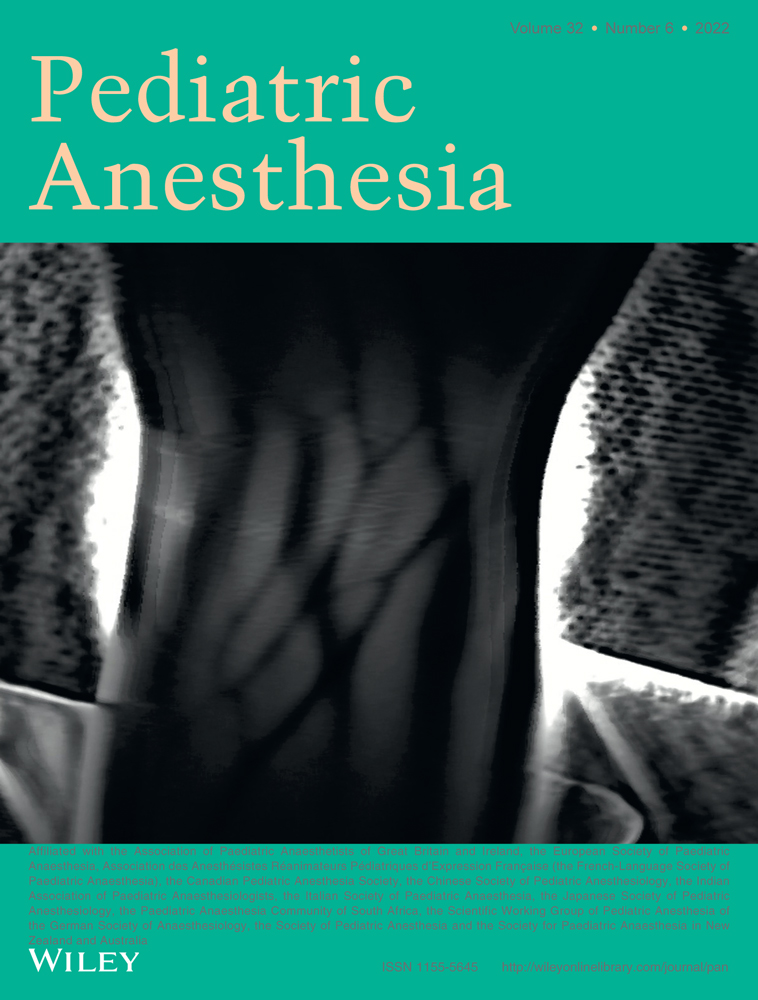Intraarterial papaverine for relief of catheter-induced peripheral arterial vasospasm during pediatric cardiac surgery: A randomized double-blind controlled trial
Abstract
Background
Maintaining the patency of peripheral arterial lines in pediatric patients during surgery can be challenging due to multiple factors, and catheter-related arterial vasospasm is a potentially modifiable cause. Papaverine, a potent vasodilator, improves arterial line patency when used as a continuous infusion in the pediatric intensive care setting, but this method is not convenient during surgery.
Aim
Extrapolating from the benefit seen in the intensive care unit, the authors hypothesize that a small-volume intraarterial bolus of papaverine immediately after arterial line placement will reduce vasospasm-related arterial line malfunction.
Methods
This was a prospective, randomized, double-blind study. Patients less than 17 years of age undergoing cardiac surgery were enrolled. Patients were randomized into the heparin or papaverine groups. Immediately after arterial line insertion, an intraarterial bolus of heparin (2 units/ml, 1 ml) or papaverine (0.12 mg/ml, 1 ml) was administered (T1, Figure 1). An optimal waveform was defined as the ease of aspirating a standardized blood sample within 30 s, absence of cavitation when sampling, absence of color change at the catheter site during injection, and presence of a dicrotic notch. The primary outcome evaluated was the presence of an optimal arterial waveform at 5 min after the first randomized dose (T1 + 5 min). The secondary outcomes were the presence of optimal arterial waveform an hour after the first dose and the ability of papaverine to rescue suboptimal waveforms.
Results
A total of 100 patients were enrolled in the study. Twelve patients were excluded from the analysis. Complete datasets after randomization were available in 88 patients (heparin group, n = 46; papaverine group, n = 42). At baseline, groups were similar for age, weight, arterial vessel size, and arterial line patency. At T1 + 5 min, an improvement in the waveform characteristics was observed in the papaverine group (heparin,39% [8/46] vs. papaverine, 64% [27/42]; p = .02; odds ratio, 2.8; 95% CI, 1.2 to 6.6, Figure 3, Table 2). At the end of 1 h, both groups showed continued improvement in arterial line patency. After the second dose, a higher number of patients in the heparin group had suboptimal waveforms and were treated with papaverine (heparin,37% [17/46] vs. papaverine,17% [7/42], p = .05). Patients in the heparin group treated with papaverine showed significant improvement in patency (13/17 vs. 3/7, p = .01). No serious adverse events were reported.
Conclusions
In pediatric patients, papaverine injection immediately after peripheral arterial catheter placement was associated with relief of vasospasm and improved initial arterial line patency. Further, papaverine can be used as a rescue to improve and maintain arterial line patency.
CONFLICT OF INTEREST
None for all authors.
Open Research
DATA AVAILABILITY STATEMENT
Data are available on request from the authors.




